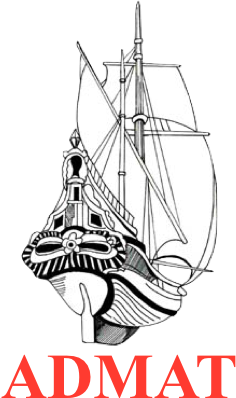By Dr. Simon Q. Spooner - President, Co Founder and Principal Investigator - ADMAT
It gives me great pleasure in introducing you to this web site. ADMAT was created in 2001 and since then has strived to protect the underwater cultural heritage in the Caribbean and other locations.
At the moment we have information on about 1,000 historic shipwrecks which require recording, documentation and protection. You will find numerous pictures on this web site, of our archaeological work. Our success in the Florida Keys for NOAA and FKNMS, as well as previous projects undertaken in St Kitts for their Government and our work in the Dominican Republic, are all displayed. This site is probably one of the largest maritime archaeological web sites available today with over 8,000 photographs.
The exciting work in the Dominican Republic, is extremely special to me, as we continue the maritime archaeological work on The Tile Wreck, Le Casimir, and our latest discovery we are calling Wreck Two amongst other important wrecks. With the success of our Maritime Archaeological Centre in Monte Cristi, the identification and publication of Le Casimir and the identification of Le Dragon and soon The Tile Wreck we have many interesting times ahead.
In 2012 we started surveying a new wreck site next to a desert island which we have called The Island Wreck. This is an exciting new wreck site in beautiful surroundings. Photographs of our work on this wreck site are now on this web site.
In 2013 we focused our work on The Tile Wreck starting in May and continuing through July and August to December. During this time a number of important finds were made. This included over 20 iron 4pdr grenades which were armed, a new flower design almost intact French faienceware bowl and on the 19th December, we located what we believe is the missing section of the ship’s rudder. This exciting find will be one of the subjects of the February 2014 survey.
In 2014 we, at last, were able to return to Le Casimir one of our great success stories, in addition to The Tile Wreck. These surveys were very successful and we were able to fly the Explorers Flag on the Le Casimir project.
In 2015 we returned for the early part and in December to The Tile Wreck while some of the Team did some RECON on other sites further away from the base in Monte Cristi.
In March 2016 we undertook a geophysical survey of a section of Monte Cristi Bay looking for a shipwreck we call Wreck One. We believe this ship was lost in 1750's and we hope to locate this ship in March 2016. We documented many items including the sand gulley's and small reefs not documented before but did not locate Wreck One. We did however on the last dive on the last day locate a new wreck site which we are calling Wreck Two. In June 2016 John Downing led a small team to conduct an initial survey of this site which found parts of the scattered cargo and other items. In 2017 we sent two teams led by John Downing and Raimund Krob to assess Wreck Two which enabled us to date the wreck to the early1900's.
In July 2018-2019, the team took on the challenge of starting the survey of Le Dragon, the last French warship lost in the American Revolutionary War in 1783. This successful survey started a multi-year project on her, as she was English before she was French and American before that under the name of Washington. The Team was able to find the rear section of the ship making her to be around 100ft long.
Scientific and forensic continues in 2025.
To: Universities, Archaeologists, Divers, Volunteers and Companies, I welcome you all to take part in any way you can. Whether this be to provide equipment, finance, manpower and support, or to actually take part in the archaeological survey; all assistance is greatly appreciated. I know that together we can save these important sites for future generations to enjoy. We aim to preserve and protect, the Underwater Cultural Heritage of these great shipwrecks. As always time is short, especially as we are dealing with the harsh elements of Mother Nature herself. Each day these sites are further destroyed by the wave action, as well as the continual risk of looting and treasure hunters.
I look forward to taking part in these exciting projects with you!
Yours faithfully
Simon
Dr. Simon Q. Spooner BSc, MRICS, PhD, MCIfA


